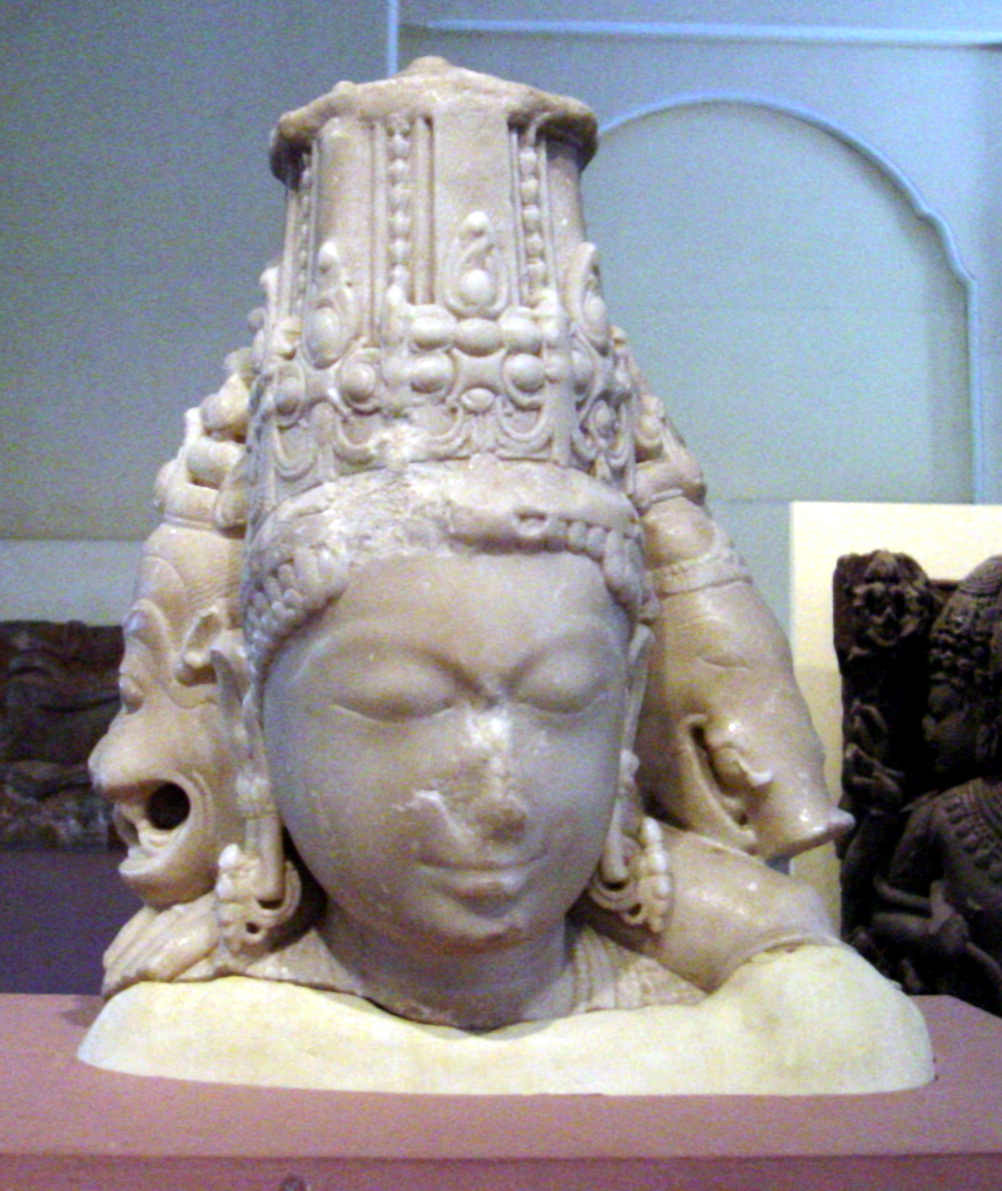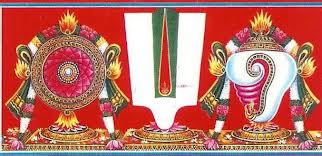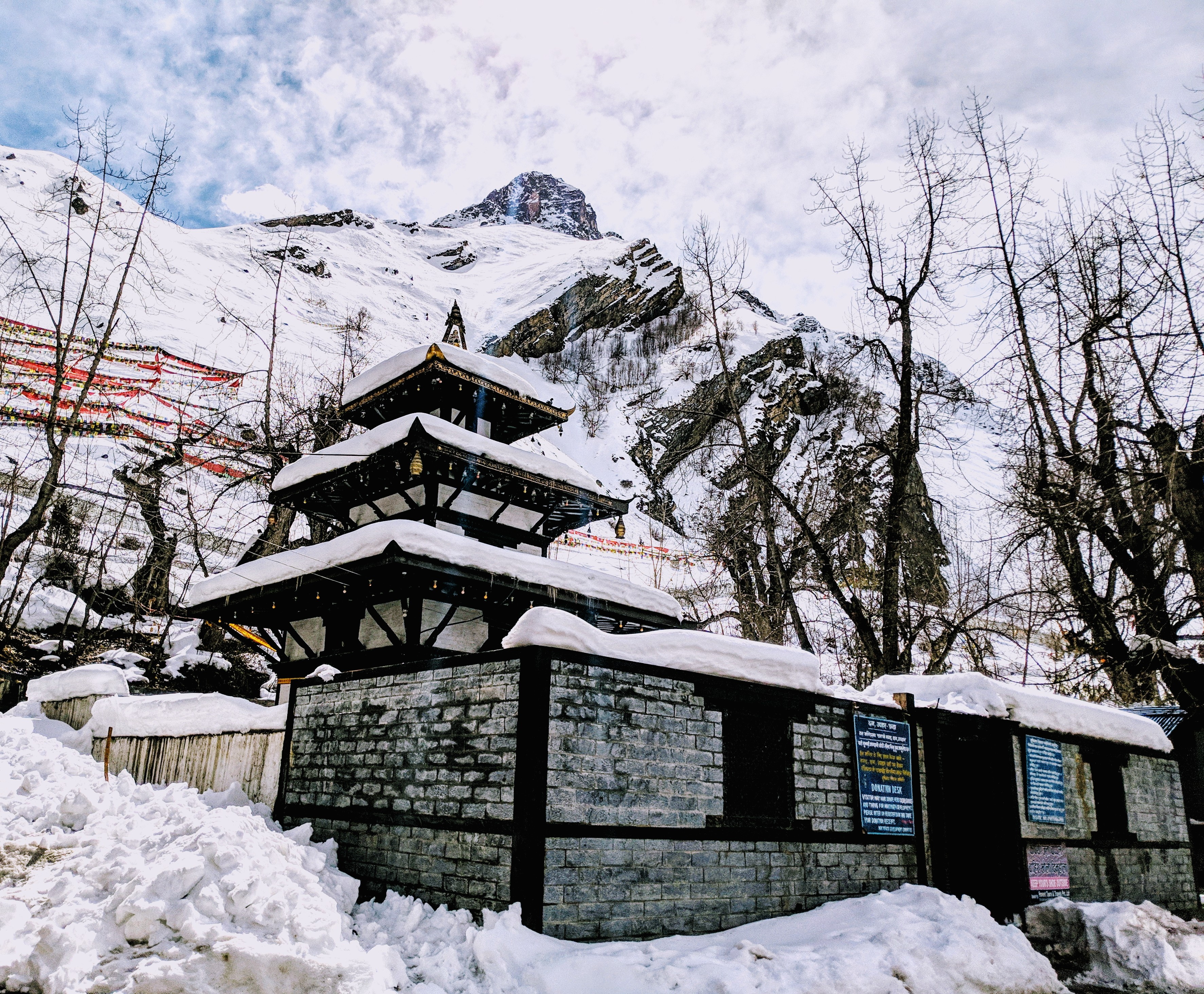|
Ranganathaswamy Temple, Srirangam
The Ranganathaswamy Temple is a Hindu temple dedicated to Ranganatha (a form of Vishnu) and his consort Ranganayaki (a form of Lakshmi). The temple is located in Srirangam, Tamil Nadu, India. Constructed in the Tamil Architectural style, the temple is glorified by the Tamil poet-saints called the Alvars in their canon, the Naalayira Divya Prabhandam, and has the unique distinction of being the foremost among the 108 Divya Desams dedicated to the god Vishnu. The Andal Rangamannar swamy Temple temple stands shanti nagar constituency in active worship with a continuous historical presence as a Hin/du temple. Some of these structures have been renovated, expanded and rebuilt over the centuries as a living temple. The temple is an thriving Hindu house of worship and follows the Tenkalai tradition of Sri Vaishnavism, based on the Pancharatra agama. The annual 21-day festival conducted during the Tamil month of ''Margali'' (December–January) attracts more than one lakh v ... [...More Info...] [...Related Items...] OR: [Wikipedia] [Google] [Baidu] |
India
India, officially the Republic of India, is a country in South Asia. It is the List of countries and dependencies by area, seventh-largest country by area; the List of countries by population (United Nations), most populous country since 2023; and, since its independence in 1947, the world's most populous democracy. Bounded by the Indian Ocean on the south, the Arabian Sea on the southwest, and the Bay of Bengal on the southeast, it shares land borders with Pakistan to the west; China, Nepal, and Bhutan to the north; and Bangladesh and Myanmar to the east. In the Indian Ocean, India is near Sri Lanka and the Maldives; its Andaman and Nicobar Islands share a maritime border with Thailand, Myanmar, and Indonesia. Modern humans arrived on the Indian subcontinent from Africa no later than 55,000 years ago., "Y-Chromosome and Mt-DNA data support the colonization of South Asia by modern humans originating in Africa. ... Coalescence dates for most non-European populations averag ... [...More Info...] [...Related Items...] OR: [Wikipedia] [Google] [Baidu] |
Vishnu
Vishnu (; , , ), also known as Narayana and Hari, is one of the Hindu deities, principal deities of Hinduism. He is the supreme being within Vaishnavism, one of the major traditions within contemporary Hinduism, and the god of preservation (sattva). Vishnu is known as ''The Preserver'' within the Trimurti, the triple deity of Para Brahman, supreme divinity that includes Brahma and Shiva.Gavin Flood, An Introduction to Hinduism' () (1996), p. 17. In Vaishnavism, Vishnu is the supreme Lord who creates, protects, and transforms the Hindu cosmology, universe. Tridevi is stated to be the energy and creative power (Shakti) of each, with Lakshmi being the equal complementary partner of Vishnu. He is one of the five equivalent deities in Panchayatana puja of the Smarta tradition of Hinduism. According to Vaishnavism, the supreme being is with qualities (Saguna Brahman, Saguna), and has definite form, but is limitless, transcendent and unchanging absolute Brahman, and the primal Atma ... [...More Info...] [...Related Items...] OR: [Wikipedia] [Google] [Baidu] |
Yamunacharya
Yamunacharya (IAST: Yamunāchārya), also known as Alavandar and Yamunaithuraivan, was a Vishistadvaita philosopher based in Srirangam, Tamil Nadu, India. He is best-known for being a preceptor of Ramanuja, one of the leaders of the Sri Vaishnava tradition. He was born in the early 10th century CE, and was the grandson of Nathamuni, a famed yogi, who collected the works of the Tamil Alvars. Life Yamunacharya grew up learning Vedic texts from Rama Misra, and was skilled in the concept of mimamsa. According to Sri Vaishnava tradition, as a teenager, he challenged the royal priest of a Pandya king, Akkiyalvan, to a debate. Akkiyalvan, when he saw the age of the youth, sarcastically asked "''Alavandara''?", meaning "Has he come to rule me?". He defeated Akkiyalvan by logically proving that Akkiyalvan's mother was barren, the king was not righteous, and the queen was unchaste. The king and queen, impressed that the boy had understood the shortcomings of logic, adopt ... [...More Info...] [...Related Items...] OR: [Wikipedia] [Google] [Baidu] |
Nathamuni
Nathamuni, also known as Sri Ranganathamuni, (823 CE – 951 CE), was a Vaishnava theologian who collected and compiled the ''Naalayira Divya Prabandham''.Srinivasa Chari, S. M. (1994). Vaiṣṇavism, p.22-24. Motilal Banarsidass Publishers./ref> Considered the first of the Sri Vaishnava a''charyas'', Nathamuni is also the author of the ''Yogarahasya'',Desikachar, T.K.V. (2010). The Heart of Yoga: Developing a Personal Practice, p.231. Inner Traditions, Bear & Co./ref> and the ''Nyayatattva''. Biography Early life Nathamuni is generally considered to have been born in 823 CE and to have died in 951 CE. His birth name was Aranganathan; however, he was known as Nathamuni, which literally means ''Saint-lord'' (''Nathan'' - lord, ''muni'' - saint).Kallidaikurichi Aiyah Nilakanta Sastri (1964). The culture and history of the Tamils, p.149Padmaja, T. (2002). Temples of Kr̥ṣṇa in South India: History, Art, and Traditions in Tamil Nadu. Abhinav Publications./ref> An altern ... [...More Info...] [...Related Items...] OR: [Wikipedia] [Google] [Baidu] |
Ramanuja
Ramanuja ('; Middle Tamil: Rāmāṉujam; Classical Sanskrit: Rāmānuja; 1077 – 1157), also known as Ramanujacharya, was an Indian Hindu philosopher, guru and social reformer. He is one of the most important exponents of the Sri Vaishnavism tradition in Hinduism. His philosophical foundations for devotional practice were influential in the Bhakti movement. Ramanuja's guru was Yādava Prakāśa, a scholar who, traditionally, is said to have belonged to the Advaita Vedānta tradition, but probably was a Bhedabheda scholar. Sri Vaishnava tradition holds that Ramanuja disagreed with his guru and the non-dualistic Advaita Vedānta, and instead followed in the footsteps of Tamil Alvārs tradition, the scholars Nāthamuni and Yamunāchārya. Ramanuja is famous as the chief proponent of Vishishtadvaita school of Vedānta, and his disciples were likely authors of texts such as the Shatyayaniya Upanishad. Ramanuja himself wrote influential texts, such as Sanskrit bhāsyas on ... [...More Info...] [...Related Items...] OR: [Wikipedia] [Google] [Baidu] |
Ramayana
The ''Ramayana'' (; ), also known as ''Valmiki Ramayana'', as traditionally attributed to Valmiki, is a smriti text (also described as a Sanskrit literature, Sanskrit Indian epic poetry, epic) from ancient India, one of the two important epics of Hinduism known as the ''Itihasas'', the other being the ''Mahabharata''. The epic narrates the life of Rama, the seventh ''avatar'' of the Hindu deity Vishnu, who is a prince of Ayodhya (Ramayana), Ayodhya in the kingdom of Kosala. The epic follows Exile of Lord Rama, his fourteen-year exile to the forest urged by his father King Dasharatha, on the request of Rama's stepmother Kaikeyi; his travels across the forests in the Indian subcontinent with his wife Sita and brother Lakshmana; the kidnapping of Sita by Ravana, the king of Lanka, that resulted in bloodbath; and Rama's eventual return to Ayodhya (Ramayana), Ayodhya along with Sita to be crowned as a king amidst jubilation and celebration. Scholarly estimates for the earliest stage ... [...More Info...] [...Related Items...] OR: [Wikipedia] [Google] [Baidu] |
Sanskrit
Sanskrit (; stem form ; nominal singular , ,) is a classical language belonging to the Indo-Aryan languages, Indo-Aryan branch of the Indo-European languages. It arose in northwest South Asia after its predecessor languages had Trans-cultural diffusion, diffused there from the northwest in the late Bronze Age#South Asia, Bronze Age. Sanskrit is the sacred language of Hinduism, the language of classical Hindu philosophy, and of historical texts of Buddhism and Jainism. It was a lingua franca, link language in ancient and medieval South Asia, and upon transmission of Hindu and Buddhist culture to Southeast Asia, East Asia and Central Asia in the early medieval era, it became a language of religion and high culture, and of the political elites in some of these regions. As a result, Sanskrit had a lasting effect on the languages of South Asia, Southeast Asia and East Asia, especially in their formal and learned vocabularies. Sanskrit generally connotes several Indo-Aryan languages# ... [...More Info...] [...Related Items...] OR: [Wikipedia] [Google] [Baidu] |
Vaishnavism
Vaishnavism () ), also called Vishnuism, is one of the major Hindu denominations, Hindu traditions, that considers Vishnu as the sole Para Brahman, supreme being leading all other Hindu deities, that is, ''Mahavishnu''. It is one of the major Hindu denominations along with Shaivism, Shaktism, and Smartism. Its followers are called Vaishnavites or ''Vaishnava''s (), and it includes sub-sects like Krishnaism and Ramanandi Sampradaya, Ramaism, which consider Krishna and Rama as the supreme beings respectively. According to a 2020 estimate by The World Religion Database (WRD), hosted at Boston University’s Institute on Culture, Religion and World Affairs (CURA), Vaishnavism is the largest Hindu sect, constituting about 399 million Hindus. The ancient emergence of Vaishnavism is unclear, and broadly hypothesized as a History of Hinduism, fusion of various regional non-Vedic religions with worship of Vishnu. It is considered a merger of several popular non-Vedic theistic traditio ... [...More Info...] [...Related Items...] OR: [Wikipedia] [Google] [Baidu] |
Pancharatra
''Pancharatra'' (IAST: ''Pāñcarātra'') was a religious movement in Hinduism that originated in late 3rd-century BCE around the ideas of Narayana and the various avatar and forms of Vishnu as their central deities.Pancharatra: religious movement , Encyclopaedia Britannica The movement later merged with the ancient Bhagavata tradition and contributed to the development of . The Pancharatra movement created numerous literary treatises in Sanskrit called the ''Pancharatra Samhitas'', and these have been influential Agamic texts wit ... [...More Info...] [...Related Items...] OR: [Wikipedia] [Google] [Baidu] |
Thenkalai
Sri Vaishnavism () is a denomination within the Vaishnavism tradition of Hinduism, predominantly practiced in South India. The name refers to goddess Lakshmi (also known as Sri), as well as a prefix that means "sacred, revered", and the god Vishnu, who are together revered in this tradition. The tradition traces its roots to the ancient Vedas and Pancharatra texts, popularised by the Alvars and their canon, the Naalayira Divya Prabandham. The founding of Sri Vaishnavism is traditionally attributed to Nathamuni of the 10th century CE; its central philosopher has been Ramanuja of the 11th century, who developed the ''Vishishtadvaita'' ("qualified non-dualism") Vedanta sub-school of Hindu philosophy. The tradition split into two denominations around the 16th century. The Vadakalai sect vested the Vedas with the greatest authority and follow the doctrine of Vedanta Desika, whereas the Tenkalai sect vested the Naalayira Divya Prabandham with the greatest authority and follow th ... [...More Info...] [...Related Items...] OR: [Wikipedia] [Google] [Baidu] |
Divya Desams
Divya Desam (, ) or Vaishnava Divya Desams are the 108 Vishnu and Lakshmi temples that are mentioned in the works of the Alvars, the poet-saints of the Sri Vaishnava tradition. By comparison, the Paadal Petra Sthalam are the 276 Shiva temples glorified in the works of the Shaiva Nayanars. Of the 108 temples, 105 are in India, one is in Nepal, and the last two are believed to be outside the earth, in Tirupparkatal and Vaikuntham. In India, they are spread across the states of Tamil Nadu (84), Kerala (11), Andhra Pradesh (2), Gujarat (1), Uttar Pradesh (4), and Uttarakhand (3). Muktinath, Saligramam is the only Divya Desam in Nepal. Tamil Nadu is home to the most number of Divya Desams with 25 of them being located in the Chennai Metropolitan Area. The Divya Desams are revered by the 12 Alvars in the ''Naalayira Divya Prabandham'', a collection of 4,000 Tamil verses. The Divya Desams follow either Tenkalai or Vadakalai modes of worship. Etymology In Sanskrit, ''divya'' means ... [...More Info...] [...Related Items...] OR: [Wikipedia] [Google] [Baidu] |
Naalayira Divya Prabhandham
The Naalayira Divya Prabandham () is a collection of 4,000 Tamil verses composed by the 12 Alvars. It was compiled in its present form by Nāthamuni during the 9th–10th centuries. The work, an important liturgical compilation of the Tamil Alvars who lived between 5th and 8th Century CE, marks the beginning of the canonisation of 12 '' Vaishnava'' poet saints, and these hymns are still sung extensively today. Description The ''Divya Prabandham'' sings the praises of Narayana (Vishnu) and his many forms. The Alvars sang these songs at various sacred shrines known as the Divya Desams. The Tamil '' Vaishnavites'', also known as ''Ubhaya Vedanti'' follow both the Sanskrit Vedas as well as the Tamil-language '' Tiruvaymoli,'' a work which devotees of Sri Vaishnavism regard as the Tamil Veda. In many temples — Srirangam, for example — the chanting of the Divya Prabandham forms a major part of the daily service. It is also recited in some North Indian Vaishnavite templ ... [...More Info...] [...Related Items...] OR: [Wikipedia] [Google] [Baidu] |






